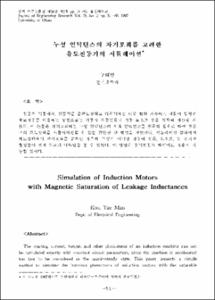Empirical Generalizations in Patterns of Cross-Price Elasticities
- Alternative Title
- 교차 가격탄력성의 실증적 일반화
- Abstract
- 이 논문의 목표는 실제로 관찰되는 교차 가격탄력성에 대한 이해를 높이고자 하는 것이다. 특히 경쟁적 촉진효과에 대한 이론을 이끌어 냈으며 상표가격과 시장점유율차이를 교차 가격탄력성의 차이와 연관시킨 가설들을 검증하였다. 15 연구들로부터의 75 제품-상점 자료로부터 추정된 280 상표의 1030 개의 교차 가격탄력성을 이용하여 가설들의 실증적 일반화를 검증하였다. 평균 교차 가격탄력성에 기초한 주요 실증적 일반화는 다음과 같다.
1. 고가격상표가 저가격상표보다 같거나 보다 높은 시장점유율을 가지고 있을 때
강한 비대칭가격효과가 고가격상표에 유리한 쪽으로 관찰되어진다. 그러나 고가격상표가 보다 낮은 시장점유율을 가지고 있을 때는 약한 비대칭가격효과가 저가격상표에 유리한 쪽으로 관찰되어진다.
2. 강한 근접가격효과가 존재한다. 즉 상표들은 가격이 바로 근접하여 낮거나 또는 높은 가격의 상표와 그렇지 않은 상표보다 더 경쟁한다.
이 들 결과의 시사점이 토의되어진다.
The broad objective of this paper is to enhance our knowledge about patterns in cross-price elasticities observed in the real world. Specially, we draw upon theories on competitive promotion effects and develop hypotheses which relate brand price and market share differences to differences in cross-price elasticities. We then test the empirical generalizability of these hypotheses through a meta-analysis of 1030 cross-price elasticities on 280 brads estimated with 75 product-store data sets from 15 studies.
The key empirical generalizations based on average cross-price elasticities are:
1. Strong asymmetric price effect in favor of the high-priced brand is observed when the high-priced brand has equal or higher market share compared to the low-priced brand. However, weak and reverse asymmetry (in favor of the low-priced brand) is observed when the high-priced brand has lower market share.
2. There is strong "neighborhood" price effect - brands compete more intensely with its immediately higher and lower priced brands than with other brands.
The implications of these are discussed.
The broad objective of this paper is to enhance our knowledge about patterns in cross-price elasticities observed in the real world. Specially, we draw upon theories on competitive promotion effects and develop hypotheses which relate brand price and market share differences to differences in cross-price elasticities. We then test the empirical generalizability of these hypotheses through a meta-analysis of 1030 cross-price elasticities on 280 brads estimated with 75 product-store data sets from 15 studies.
The key empirical generalizations based on average cross-price elasticities are:
1. Strong asymmetric price effect in favor of the high-priced brand is observed when the high-priced brand has equal or higher market share compared to the low-priced brand. However, weak and reverse asymmetry (in favor of the low-priced brand) is observed when the high-priced brand has lower market share.
2. There is strong "neighborhood" price effect - brands compete more intensely with its immediately higher and lower priced brands than with other brands.
The implications of these are discussed.
- Issued Date
- 1997
- Type
- Research Laboratory
- Alternative Author(s)
- 김도일
- Publisher
- 경영학연구논문집
- Language
- eng
- Rights
- 울산대학교 저작물은 저작권에 의해 보호받습니다.
- Citation Volume
- 4
- Citation Number
- 2
- Citation Start Page
- 51
- Citation End Page
- 75
- Appears in Collections:
- Research Laboratory > Journal of management
- 파일 목록
-
-
Download
 000002024023.pdf
기타 데이터 / 421.35 kB / Adobe PDF
000002024023.pdf
기타 데이터 / 421.35 kB / Adobe PDF
-
Items in Repository are protected by copyright, with all rights reserved, unless otherwise indicated.